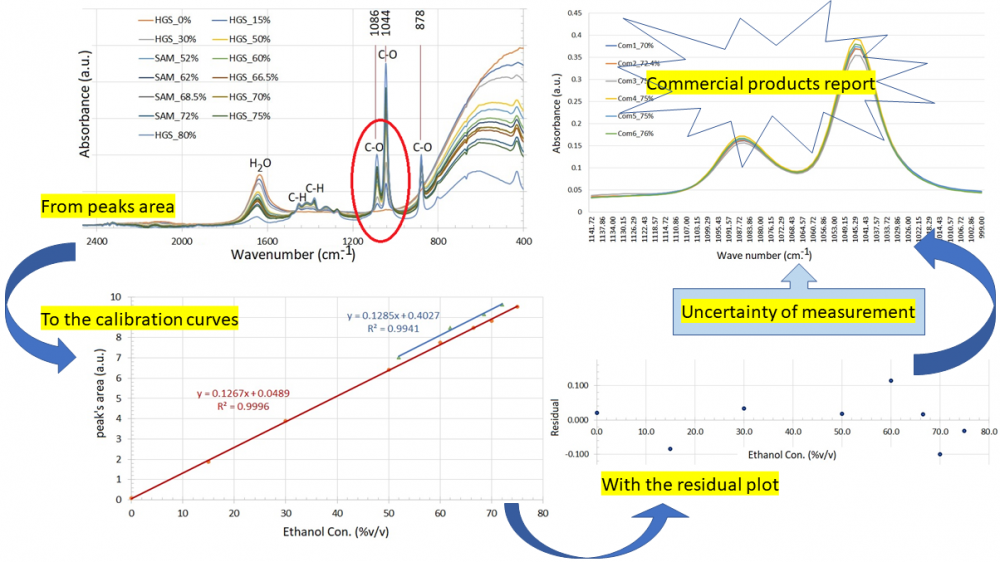JOURNAL 2611
Journal of Chemical Metrology
Year: 2023 Issue: 1 January-June
p.1 - 14
Viewed 2747 times.
-
Panya Khaenamkaew

-
Chailoek Tanghengjaroen

-
Dhonluck Manop

-
Worasit Palkawong Na Ayuthaya

-
Krirk Wongsontam

-
Narudom Nualkhow

GRAPHICAL ABSTRACT

ABSTRACT
Analysis of uncertainty estimation for measurement of type and concentration of alcohol in hand sanitisers is a matter of urgency in the CoVid-19 situation. FTIR spectroscopy was used to investigate hand sanitisers made in our laboratory and commercial products. An internal standard addition method was used to control the measurement quality. The absorption spectra of ethanol were found to be at 1086 and 1044 cm−1, corresponding to C-O stretching. The area under the C-O adsorptions is used to create a calibration curve, which is then used to calculate the ethanol percentage. Additional standard sample and quality control sample showed calibration curves with slopes of 0.1267 and 0.1285, respectively. The regression coefficients and residual variance of 0.0057 showed a ‘best fit’ with the predicted value. These parameters were used to estimate the uncertainty of six commercial products. The ethanol concentration of commercial products is measured between 71.38 and 81.54% v/v, with an estimated uncertainty of 1.14% v/v. The results showed that the ethanol content of all products differed from the label but could be used to kill bacteria and viruses. This entire process was established as a SOP for measuring alcohol concentration in hand sanitiser.
KEYWORDS- COVID-19 pandemic
- alcohol concentration
- hand Sanitiser
- ISO/IEC 17025
- uncertainty estimation
- FTIR spectroscopy